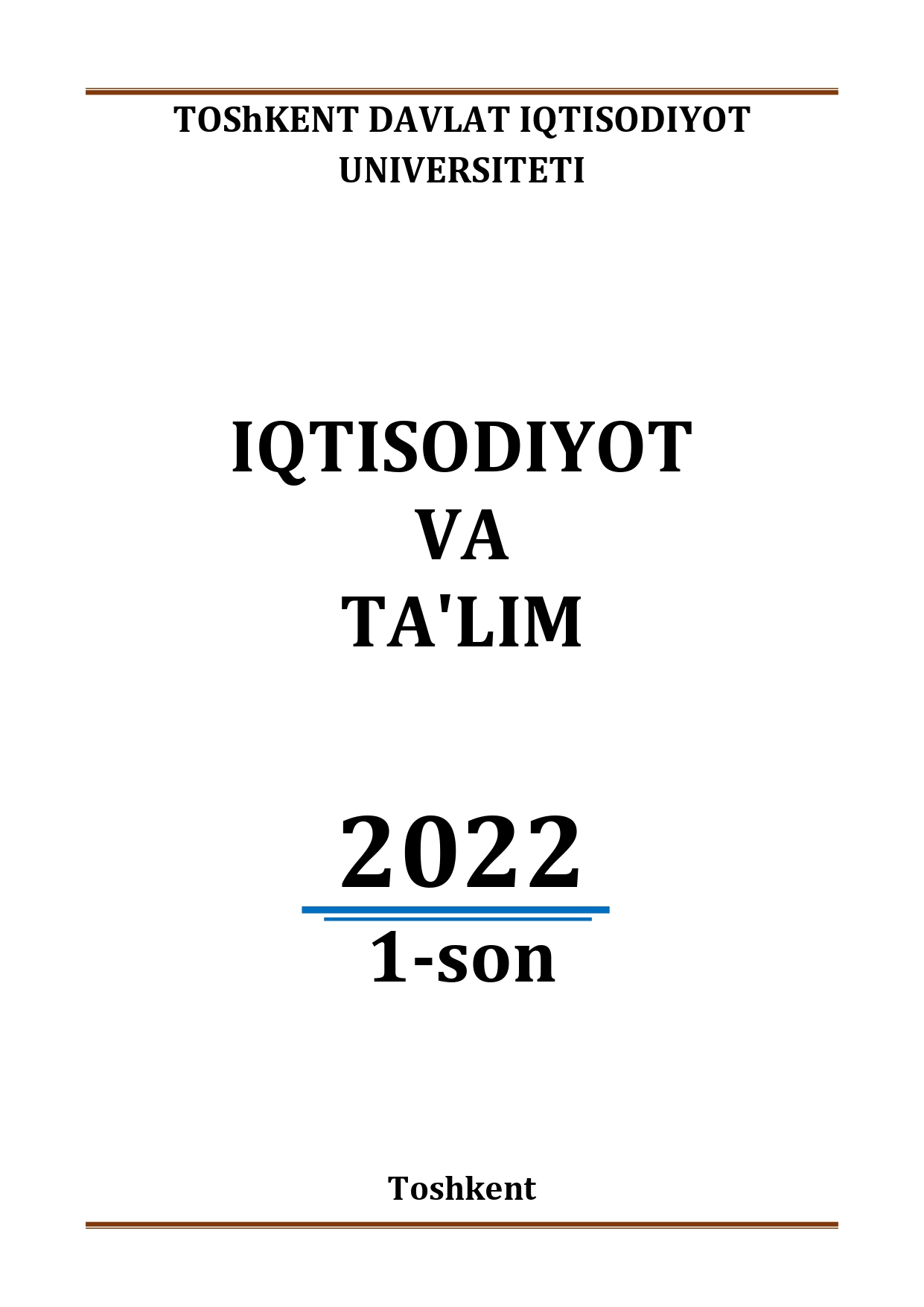Abstract
Over the past few decades, brand capital identification has been seen as a problem waiting to be solved for marketing researchers, and a lot of research is being done. The main purpose of this study is to identify the problems associated with the transformation of the formed image of higher education institutions into a brand, as well as the factors contributing to the formation of the brand of universities, measuring brand capital. The results of the study can be used to set key strategic goals for brand management in universities.
References
Манба: www.unesco.org
Ўзбекистон Республикаси Президентининг 2017 йил 7 февралдаги «Ўзбекистон Республикасини янада ривожлантириш бўйича Ҳаракатлар стратегияси тўғрисида»ги ПФ-4947-сонли Фармони. Ўзбекистон Республикаси қонунчилик ҳужжатлари тўплами. 2017 йил. 6-сон.
Farquhar, P. (1989). Managing brand equity. Marketing Research, 1, 24–33.
Aaker, D. A. (1991, September). Managing brand equity: Capitalizing on the value of a brand name. New York, NY: Free Press.
Kapferer, J. N. (1998). Strategic brand management: Creating and sustaining brand equity long term. London: Kogan Page. Kaufmann, H.
Keller, K. (2003). Brand synthesis: The multidimensionality of brand knowledge. Journal of Consumer Research, 29, 595–600. http://dx.doi.org/10.1086/jcr.2003.29.issue-4
Aaker, D. A. (1991, September). Managing brand equity: Capitalizing on the value of a brand name. New York, NY: Free Press.
Huang, R., & Sarigöllü, E. (2012). How brand awareness relates to market outcome, brand equity, and the marketing mix. Journal of Business Research, 65, 92–99. http://dx.doi.org/10.1016/j.jbusres.2011.02.003
Keller, K. L. (1993). Conceptualizing, measuring, and managing customer-based brand equity. Journal of Marketing, 57(1), 1–22. http://dx.doi.org/10.2307/1252054
Rossiter, J. R., & Percy, L. (1987). Advertising and promotion management. New York, NY: McGraw-Hill.
Chang, H. H., & Liu, Y. M. (2009). The impact of brand equity on brand preference and purchase intentions in the service industries. The Service Industries Journal, 29, 1687–1706. http://dx.doi.org/10.1080/02642060902793557
Doney, P. M., & Cannon, J. P. (1997, April). An examination of the nature of trust in buyer–seller relationships. Journal of Marketing, 61, 35–51. http://dx.doi.org/10.2307/1251829; Ganesan, S., & Hess, R. (1997). Dimensions and levels of trust: Implications for commitment to a relationship. Marketing Letters, 8, 439–448. http://dx.doi.org/10.1023/A:1007955514781
Azoulay, A., & Kapferer, J. N. (2003). Do brand personality scales really measure brand personality? Journal of Brand Management, 11, 143–155. Retrieved from http://www. kapferer.com/mp_pdf/A%26KBrandPersonality_52643.pdf
Aaker, J. L. (1997). Dimensions of brand personality. Journal of Marketing Research, 34, 347–356. http://dx.doi.org/10.2307/3151897
Long, M. M., & Schiffman, L. G. (2000). Consumption values and relationships: Segmenting the market for frequency programs. Journal of Consumer Marketing, 17, 214–232. http://dx.doi.org/10.1108/07363760010329201
Pinar, M., & Trapp, P. (2008). Creating competitive advantage through ingredient branding and brand ecosystem: The case of Turkish cotton and textiles. Journal of International Food & Agribusiness Marketing, 20 (1), 29-56.

This work is licensed under a Creative Commons Attribution-ShareAlike 4.0 International License.
Copyright (c) 2022 Economics and education
